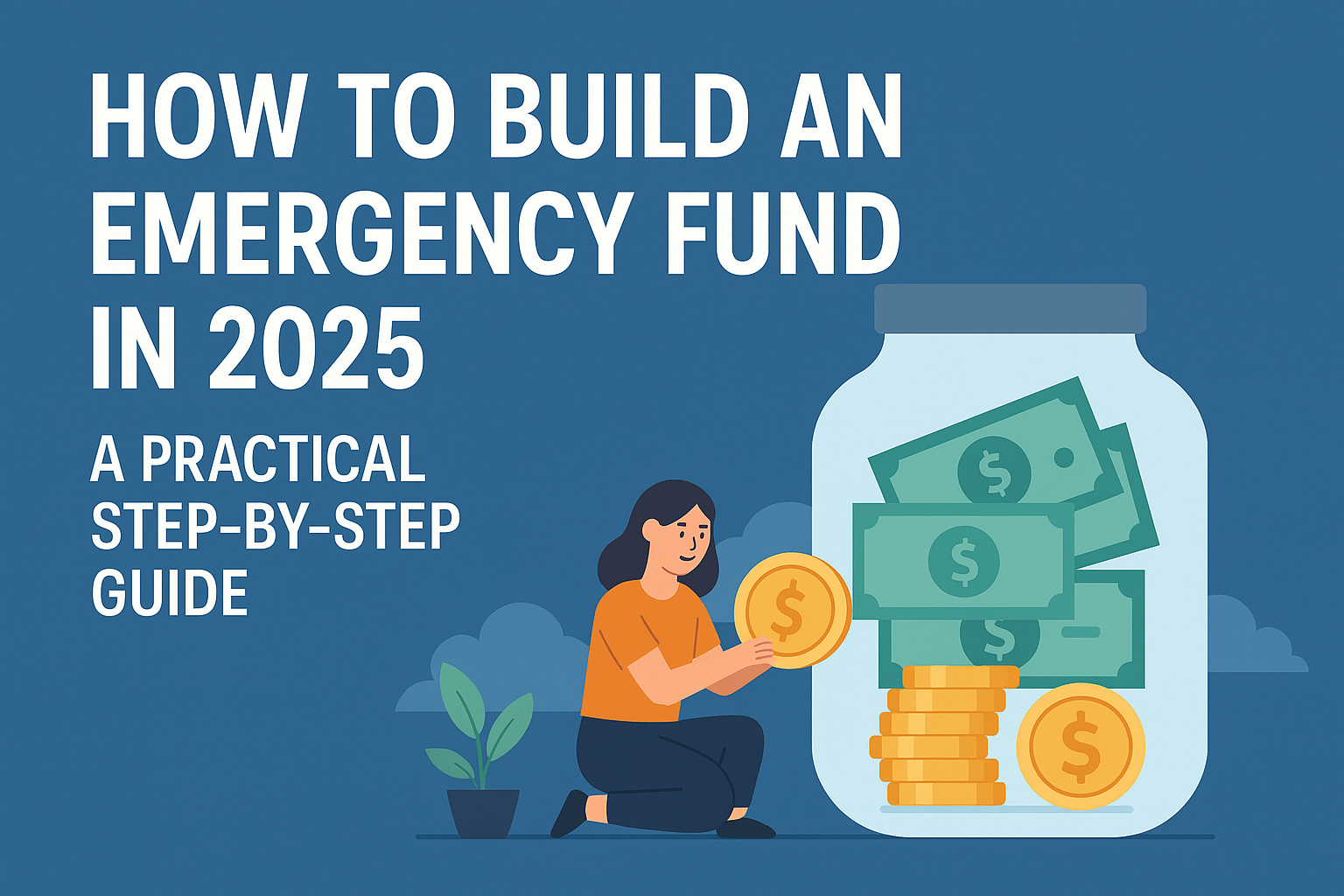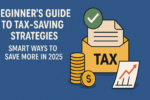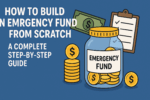In today’s unpredictable world, financial security has become more important than ever. Whether it is unexpected medical expenses, sudden job loss, or urgent home repairs, an emergency fund acts as your financial shield. In 2025, with rising living costs and evolving digital banking tools, building an emergency fund has become both easier and more essential. This step-by-step guide will help you understand how to set realistic goals, automate your savings, and choose the right banking or digital platforms to grow your emergency fund effectively.
Why an Emergency Fund Matters in 2025
An emergency fund is not just extra savings—it is a financial safety net. Without it, you may be forced to rely on credit cards, personal loans, or borrowing from friends and family during tough times. This can lead to debt and stress. Having an emergency fund gives you peace of mind, reduces financial pressure, and allows you to focus on solutions instead of worrying about money.
Step 1: Set a Realistic Target
The first step in building an emergency fund is deciding how much you need. Experts generally recommend saving at least three to six months’ worth of expenses. In 2025, with inflation and higher living costs, aiming for six months’ coverage is safer.
For example:
If your monthly expenses (rent, food, bills, and transport) are ₹30,000, your emergency fund goal should be at least ₹1,80,000.
If you have dependents or unstable income, consider a bigger cushion of up to nine months.
Write down your target amount and break it into smaller monthly savings goals. This makes the process less overwhelming and easier to achieve.
Step 2: Create a Budget and Cut Unnecessary Spending
Once you know your target, the next step is finding money to save. Track your monthly income and expenses carefully. Categorize your spending into essentials (rent, groceries, utilities) and non-essentials (eating out, subscriptions, shopping).
- Small adjustments can make a big difference. For example:
- Cutting one food delivery order per week could save you ₹2,000 a month.
- Canceling unused subscriptions could add another ₹500–₹1,000.
- Redirect these savings straight into your emergency fund.
Step 3: Automate Your Savings
The easiest way to save consistently is to automate the process. In 2025, most banks and digital wallets offer auto-transfer features. You can set up an instruction where a fixed amount is transferred to your emergency savings account as soon as your salary is credited.
For instance, if you earn ₹40,000 monthly, you could automate ₹5,000 to move into a separate savings account. This way, saving happens without effort, and you are less tempted to spend the money.
Step 4: Choose the Right Bank or Digital Tool
Where you keep your emergency fund is as important as how you build it. The fund should be safe, liquid (easy to access), and preferably earn some interest. In 2025, you have multiple options:
High-Interest Savings Accounts: Many banks now offer savings accounts with higher interest rates than before. This ensures your emergency fund grows while staying easily accessible.
Digital Banks and Fintech Apps: New-age apps provide features like goal-based savings, auto-roundups (saving your spare change), and higher returns. They also offer instant withdrawals in case of emergencies.
Recurring Deposit (RD) Accounts: If you struggle with discipline, setting up an RD with your bank can help you save fixed amounts monthly while earning guaranteed interest.
Avoid locking your emergency fund in long-term FDs or investments like mutual funds, as quick access is crucial.
Step 5: Start Small but Stay Consistent
Many people delay saving because they think they need a large amount to begin. The truth is, even small contributions add up over time. Start with whatever you can—₹500, ₹1,000, or ₹2,000 a month—and increase the amount gradually as your income grows.
Consistency matters more than size in the beginning. Over a year, even ₹2,000 per month will give you ₹24,000, enough to cover several unexpected expenses.
Step 6: Keep Your Emergency Fund Separate
Do not mix your emergency fund with regular savings or daily expenses. Create a separate bank account or digital wallet dedicated only to emergencies. This reduces the temptation to dip into it for vacations, shopping, or luxury purchases.
Label the account clearly—such as “Emergency Fund Only”—to remind yourself of its purpose.
Step 7: Review and Adjust Regularly
Your emergency fund should evolve with your lifestyle. Review it every six months to check if it matches your current expenses. For example, if you move to a bigger city or your household grows, your expenses will increase, and so should your fund.
In 2025, digital budgeting apps make tracking easy by showing you monthly spending and suggesting adjustments automatically.
Step 8: Use It Only for True Emergencies
Finally, remember the golden rule: this fund is for emergencies only. True emergencies include medical bills, sudden job loss, car breakdowns, or urgent home repairs. Avoid using it for planned expenses like vacations, festivals, or buying gadgets.
If you ever need to use the fund, restart the process immediately and rebuild it as soon as possible.
Final Thoughts
Building an emergency fund in 2025 is no longer optional—it is a necessity. By setting a clear target, budgeting wisely, automating savings, and choosing the right bank or digital tools, you can create a reliable financial cushion. Start small, stay disciplined, and protect your hard-earned money from life’s unexpected challenges.
An emergency fund is not just about money; it is about peace of mind. The earlier you start, the stronger your financial future will be.






